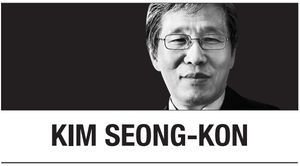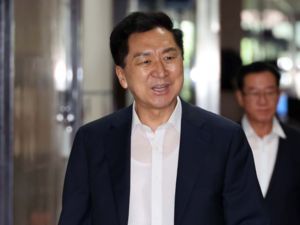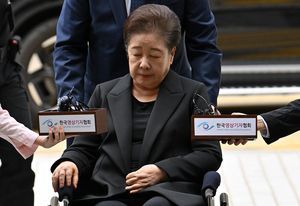45.5% for the Democratic Party, 34.7% for the People Power Party
People Future scored 29.8%, Homeland Innovation Party 24.0%, and Democratic Alliance of Korea 20.6% in the proportional representative party survey

When asked about their voting preferences in the local constituency election, respondents who favored the Democratic Party of Korea candidate outnumbered those supporting the People Power Party candidate by a significant margin, surpassing the margin of error.
Conducted by Research & Research on behalf of Dong-A Ilbo last month on the 28th and 29th, the public opinion poll interviewed 1,004 adult men and women nationwide using a 100% wireless telephone method and random dialing (RDD). The results, unveiled on the 31st, revealed that 45.5% would opt for the Democratic Party candidate, while 34.7% would choose the People Power Party candidate. The margin of error is ±3.1% with a 95% confidence level.
In the proportional representative party survey, the People Future (a satellite party of the People Power Party) scored 29.8%, the Homeland Innovation Party 24.0%, and the Democratic Alliance of Korea (a satellite party of the Democratic Party) 20.6%. Combining the support for the Homeland Innovation Party and the Democratic Alliance of Korea results in a combined percentage of 44.6%, marking a difference of 14.8 percentage points compared to the People Future Party.
Looking at the regions, the Democratic Party received 49.5% of the support in Seoul (48 seats), the biggest battleground, while the People Power Party received 32.6%. The gap is 16.9 percentage points. In Gyeonggi and Incheon, where the most seats (74) are at stake, the Democratic Party received 45.7% and the People Power Party 33.1%. The gap here is 12.6 percentage points. In Daejeon, Sejong, and Chungcheong (28 seats), the Democratic Party received 45.9% and the People Power Party 35.8%, translating to a gap of 10.1 percentage points. These gaps are all outside the margin of error. In Busan, Ulsan, and South Gyeongsang (40 seats), the People Power Party secured 46% support. At the same time, the Democratic Party obtained 34.9%, leading to a gap of 11.1 percentage points, exceeding the margin of error.
These poll results underscore the growing momentum behind the argument for evaluating the current regime. When asked ‘”Which opinion do you agree with, judging the current regime or the main opposition party?” 46.5% favored “The current regime should be judged,” while 28.9% favored “The main opposition party should be judged.” The 17.6 percentage point gap exceeds the margin of error.
Realmeter conducted a poll (±3.1% at a 95% confidence level) on behalf of Energy Economics Newspaper last month on the 28th and 29th, targeting 1,004 voters aged 18 and over nationwide using a wireless (97%) and wired (3%) automatic response telephone (ARS) method. Results released on the 1st indicated the Democratic Party at 43.1% and the People Power Party at 35.4%, surpassing the margin of error.
Compared to the previous week’s poll, the Democratic Party increased by 0.3 percentage points. The People Power Party decreased by 1.7 percentage points, widening the gap from 5.7 to 7.7 percentage points, beyond the margin of error.
In the proportional representation party voting, the People’s Future and the Homeland Innovation Party increased, while the Democratic Union decreased.
The gap between the People Future Party and the Homeland Innovation Party is 0.7 percentage points, showing a neck-and-neck race within the margin of error.










Most Commented